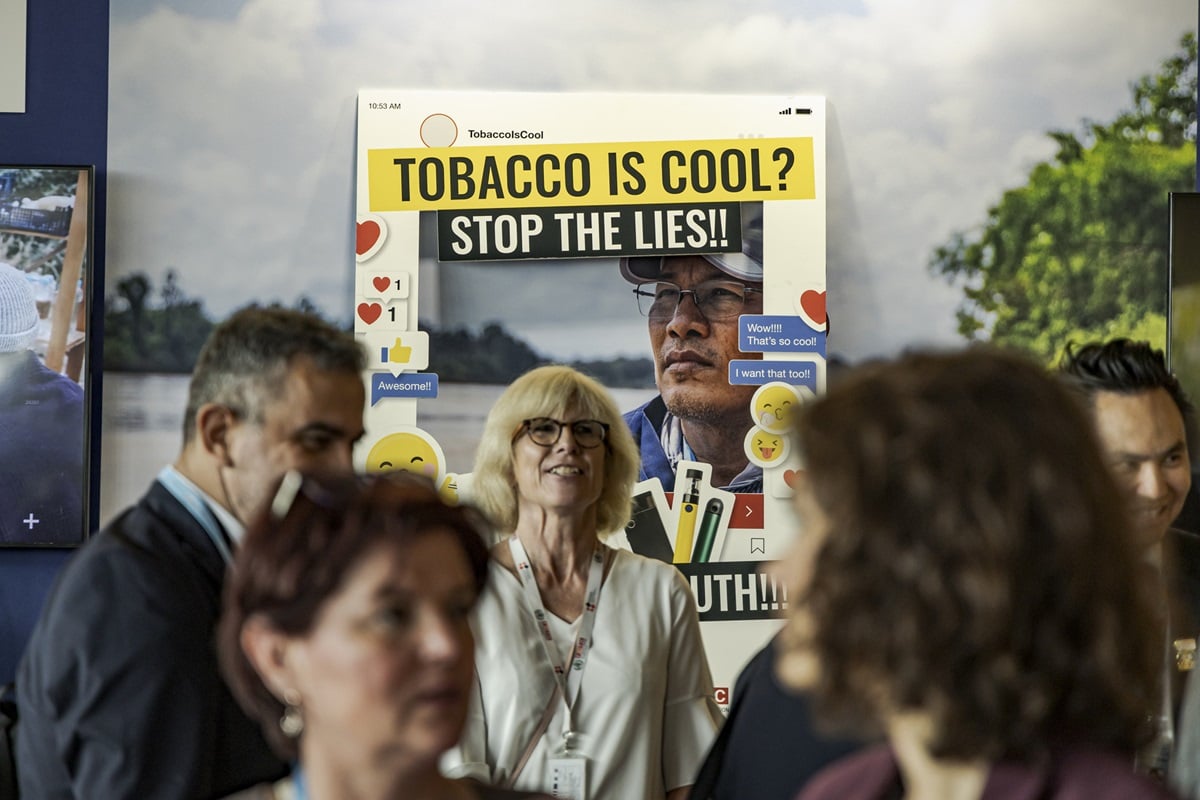Report on World No Tobacco Day 2026: Aligning Tobacco Control with Sustainable Development Goals
Introduction: A Renewed Focus on SDG 3
The World Health Organization (WHO) has announced the theme for World No Tobacco Day 2026: “Unmasking the appeal – countering nicotine and tobacco addiction.” This campaign directly supports the achievement of Sustainable Development Goal 3 (Good Health and Well-being), specifically Target 3.a, which calls for strengthening the implementation of the WHO Framework Convention on Tobacco Control. The initiative will focus on exposing industry strategies that repackage nicotine and tobacco products to attract a new generation, thereby undermining global public health progress.
Industry Practices as a Barrier to Sustainable Development
The tobacco and nicotine industry’s persistent tactics pose a significant threat to several Sustainable Development Goals. By aggressively marketing new products such as e-cigarettes and nicotine pouches under the guise of “innovation,” these corporations actively work against the global commitment to reduce premature mortality from non-communicable diseases (SDG Target 3.4).
- Targeting Youth: The industry’s focus on children and adolescents jeopardizes the health and well-being of future generations, a foundational principle of the 2030 Agenda for Sustainable Development.
- Deceptive Marketing: The use of appealing flavors and slick packaging is a direct attempt to create a cycle of addiction, which conflicts with the principles of responsible consumption and production (SDG 12).
Impact Assessment: Youth Health and Global Goals
Recent data indicates a severe public health crisis that directly impacts the achievement of global goals. The statistics reveal a significant challenge to ensuring healthy lives and promoting well-being for all at all ages (SDG 3).
- Globally, at least 40 million children aged 13–15 currently use a tobacco product.
- An estimated 15 million adolescents in the same age group are users of e-cigarettes.
- This targeted recruitment of young users threatens to reverse decades of progress in public health and creates long-term barriers to sustainable human development.
Strategic Objectives for the 2026 Campaign
The World No Tobacco Day 2026 campaign outlines three core objectives designed to accelerate progress towards the SDGs by countering the tobacco and nicotine epidemic.
- Enhance Public Knowledge and Education (SDG 4): To raise awareness of the industry’s evolving strategies, including the use of synthetic nicotine and other analogues, thereby equipping youth with the knowledge to resist manipulation.
- Advocate for Stronger Institutions and Policies (SDG 16): To promote robust policy action, including bans on flavors and comprehensive restrictions on advertising and promotion, to protect youth and uphold public health mandates.
- Promote Health and Well-being (SDG 3): To prevent addiction and reduce demand by providing the public, particularly young people, with access to evidence-based cessation support and tools to resist industry influence.
Conclusion: A Call for Multi-Stakeholder Partnerships (SDG 17)
The 2026 campaign is a call to action for governments, civil society, and international partners to strengthen collaboration in line with SDG 17 (Partnerships for the Goals). By strengthening regulation, closing policy gaps, and holding the industry accountable, the global community can safeguard future generations and ensure that progress towards a tobacco- and nicotine-free future contributes directly to the broader 2030 Agenda for Sustainable Development.
1. Which SDGs are addressed or connected to the issues highlighted in the article?
Detailed Explanation:
-
SDG 3: Good Health and Well-being
The entire article is centered on public health, specifically the negative impacts of tobacco and nicotine addiction. It discusses the World Health Organization’s (WHO) efforts to counter the tobacco industry’s tactics, reduce tobacco use, and prevent addiction, particularly among youth. These actions directly contribute to ensuring healthy lives and promoting well-being for all at all ages.
2. What specific targets under those SDGs can be identified based on the article’s content?
Detailed Explanation:
-
Target 3.4: By 2030, reduce by one third premature mortality from non-communicable diseases through prevention and treatment and promote mental health and well-being.
The article highlights the dangers of tobacco and nicotine products, which are major risk factors for non-communicable diseases (NCDs) like cancer, cardiovascular disease, and chronic respiratory diseases. The campaign’s goal to “prevent addiction and reduce demand” is a direct preventative measure aimed at reducing the future burden of NCDs.
-
Target 3.5: Strengthen the prevention and treatment of substance abuse, including narcotic drug abuse and harmful use of alcohol.
Nicotine is a highly addictive substance. The article explicitly focuses on countering “nicotine and tobacco addiction” and preventing a “cycle of addiction.” The campaign aims to equip youth with tools to “resist industry manipulation and access evidence-based cessation support,” which aligns with strengthening the prevention and treatment of substance abuse.
-
Target 3.a: Strengthen the implementation of the World Health Organization Framework Convention on Tobacco Control in all countries, as appropriate.
The article directly supports this target by calling for stronger government action and regulation. The campaign advocates for “stronger policy action to protect youth through bans on flavours, advertising and promotion… and regulation of packaging and product design.” This call to “strengthen regulation, close policy gaps, and safeguard future generations” is a core component of implementing the WHO Framework Convention on Tobacco Control (FCTC).
3. Are there any indicators mentioned or implied in the article that can be used to measure progress towards the identified targets?
Detailed Explanation:
-
Prevalence of tobacco and nicotine use among adolescents.
The article provides specific data points that serve as direct indicators of the problem and can be used as a baseline to measure progress. These include:
- “at least 40 million children aged 13–15 globally report current use of at least one tobacco product.”
- “20 million smoke cigarettes and 10 million use smokeless (oral/nasal) tobacco.”
- “at least 15 million adolescents aged 13–15 years are already using e-cigarettes.”
These statistics directly measure the prevalence of substance use in a key demographic, which is crucial for monitoring progress on Targets 3.4 and 3.5.
-
Implementation of tobacco control policies.
The article implies the use of policy-based indicators. The campaign’s call to “advocate for stronger policy action” such as “bans on flavours, advertising and promotion” and “regulation of packaging” suggests that the adoption and enforcement of these specific tobacco control measures can be used as an indicator of progress towards Target 3.a.
4. Table of SDGs, Targets, and Indicators
| SDGs | Targets | Indicators |
|---|---|---|
| SDG 3: Good Health and Well-being | Target 3.4: Reduce premature mortality from non-communicable diseases. | Prevalence of current tobacco use among children aged 13-15 (e.g., the “40 million children” statistic). |
| SDG 3: Good Health and Well-being | Target 3.5: Strengthen the prevention and treatment of substance abuse. | Prevalence of e-cigarette use among adolescents aged 13-15 (e.g., the “15 million adolescents” statistic). |
| SDG 3: Good Health and Well-being | Target 3.a: Strengthen the implementation of the WHO Framework Convention on Tobacco Control. | Adoption of policies to protect youth, such as bans on flavours, advertising, and promotion of tobacco and nicotine products. |
Source: who.int







